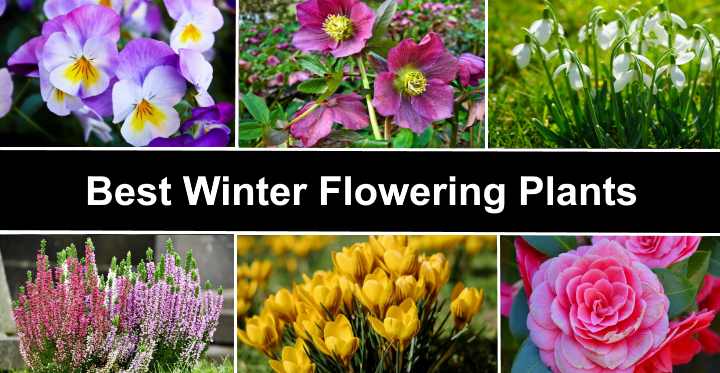Winter-flowered plants add a lot of brightness to a barren garden landscape. When other plants don’t grow, colorful winter flowering plants continue to bring life to gardens. Some perennial flowers, yearly flowers, bulbous plants, and flowering shrubs survive the winter and continue to bloom in a variety of colors.
Winter flowers will keep color in your garden after some late bloomers finish blooming in the fall. Plants that last throughout the winter will keep your garden alive, whether planted along edges, in mixed flower beds along driveways, or in pots on patios or decks. Winter blooms come in a variety of blue, yellow, orange, pink, purple, red, and white hues. To add greenery to winter landscapes, you could also plant evergreen shrubs.
This is a guide for selecting the finest winter blooms for your garden. Your front or back yard will have plants that bloom from November to March if you pick wisely.
Where to Plant Winter Flowers
In a variety of climates, even in chilly areas, you can grow winter flowering plants. In warmer regions, it’s simpler to discover plants that can withstand winter, however there are numerous cold-hardy plants available. There are a few things to keep in mind when selecting the finest blooms for winter cultivation. You should first check the USDA zone where you live. During severe cold, some kinds of winter plants may perish. Annuals thrive in northern states but are perennials in warmer zones, for example.
Second, consider how much light your plants will need to bloom. Many winter blooming plants need a lot of sun. To give the roots time to establish themselves, you may need to plant bulbs or shrubs in the ground early in the winter.
When to Expect Winter Flowering Plants to Bloom
The kind of flower, climate, and sun exposure all play a role in determining when cold-hardy blooming plants start to bloom. When the snow melts in late winter, some robust bulbous plants begin to bloom, for example. In milder climates, several perennials will produce blooms all winter.
For winter blooms to emerge on colder plants in February or March, you may have to wait. The first flowers may appear in December or January in regions with milder winters.
Winter blooming annuals may require you to plant them at the conclusion of summer or start of fall in order to bloom during winter if you grow them. It’s also beneficial to recall that some winter blooming bulbs need a cold snap to flourish.
Winter Flowers – Plants that Blossom in Winter
During the winter, these are 17 flowers that bloom.
Winter Pansies (Viola hiemalis)

Because of their colorful flowers that bloom in winter, pansies are plants that flower throughout the autumn and winter. Pansies are tough plants that bloom in bright hues of yellow, rich purple, and orange throughout the winter. Pansies with black flowers can be found. Choose Viola hiemalis cultivars for cold-hardy blooming pansies, which bloom throughout the winter.
Winter pansies are also known as ice pansies because of their tolerance to cold. Plant pansies as annuals in cold regions to get stunning fall and winter colors. Pansies are wonderful indoor or outdoor plants that may be grown in pots or in the earth.
Pansies should be planted at the optimum time of year: September. Flowers may bloom in the fall, as well as November and December, if they are protected. In early spring, the lovely blossoms will create a gorgeous floral display. In USDA zones 4 through 7, low-growing garden pansies flourish in cooler weather.
Christmas Rose (Helleborus niger)

To brighten a dark corner in your garden, you can cultivate Christmas rose as a winter bloom. The blooms, which are shaped like a cup, grow on long stems and are 3 inches (8 cm) across. Christmas rose is a long-lived perennial that blooms in the winter when the weather gets cold. For growing in full to partial shade, Christmas rose is an excellent winter perennial.
In shady borders, under shrubs, or in mixed beds, Christmas trees perform best. Christmas rose is a terrific shade and winter blooming plant for pots. It’s also a good ground cover plant. USDA zones 3 through 8 are ideal for Christmas.
Lenten Rose (Helleborus x hybridus)
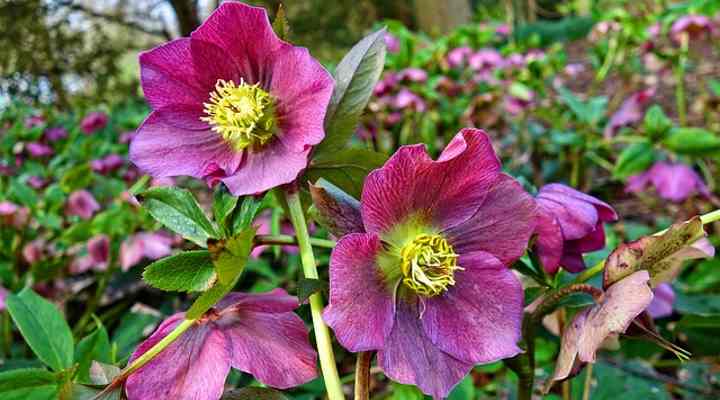
Lenten rose is a clump-forming perennial that blooms in mid or late winter and early spring, and it may be planted outdoors during the winter. Winter flowers range in color from red, yellow, white, pink, and purple. Lenten rose blooms create them all. This Helleborus hybrid may bloom in the springtime, around Lent, in freezing areas.
Lenten rose thrives in shaded areas beneath shrubs or trees and is a winter plant. The spreading plant’s evergreen foliage adds green to bare ground in the winter, making it perfect for ground cover. USDA zones 3 through 8 are ideal for Lenten rose.
Winter Aconite (Eranthis hyemalis)

Winter aconite blooms in late winter with little, brilliant yellow flowers that resemble buttercup flowers. It is a hardy outdoor plant that is cold tolerant. Winter aconite is a cold-hardy plant that blooms when there is still snow on the ground, as opposed to other plants. The green leaves of the tiny winter aconite plant emerge after it flowers in the winter, growing to 6″ (15 cm) tall.
A perennial flower, winter aconite should be planted in the autumn. Even though its growth goes dormant in the spring, the ground needs to be kept moist year after year to flower. In the spring, winter aconite rots back to tuberous roots. USDA zones 3 through 7 are home to winter aconite.
English Primrose (Primula vulgaris)

You may keep it as an indoor planter or outdoors ground cover, and it will bloom from late winter till mid-spring. English primrose is a low-growing blooming plant that suits nicely for providing colorful ground cover throughout the winter. The golden yellow center of the pale-yellow spherical blossoms.
In chilly summers, English primrose thrives in partial shade or full sun and grows best in the winter. Borders, mixed flower beds, and rock gardens are all good places to grow the hardy English primrose plant. For growing in pots outside during the winter, Primula vulgaris is also a good option. USDA zones 4 through 8 are suitable for English primrose.
Winter Jasmine (Jasminum nudiflorum)
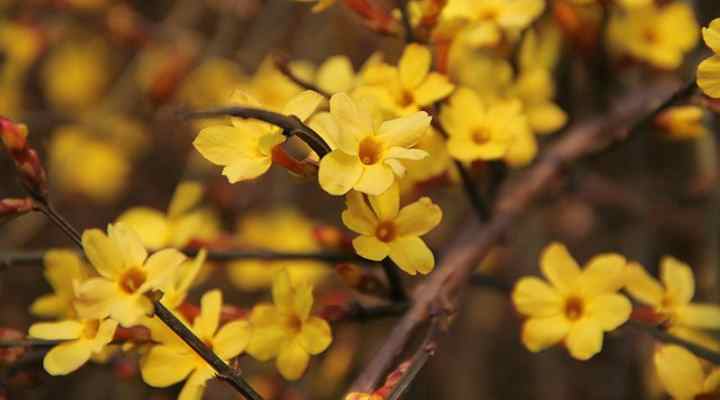
Winter jasmine is a tiny yellow bloom that blooms in the winter with long hanging branches. It is a cold weather bloom. Late winter or early spring sees the slender vine branches produce clusters of blooms. The vining stems of winter jasmine may grow up to 15 feet (4.5 meters) tall, reaching 4 feet (1.2 meters) in height.
The name “the flower that welcome spring” refers to winter jasmine, which is native to China and blooms from November through March. In USDA zones 6 through 9, winter jasmine thrives.
Camellia (Camellia japonica)

Camellia japonica is a hardy shrub with single, double, or peony-like showy blooms that bloom in the winter. In late winter or early spring, the hybrid Camellia japonica produces spectacular floral displays. Winter blooms vary in size from 1.5″ to 5″ (4 cm) depending on the Camellia species. Camellia japonica is also known as winter rose because of its stunning flowers. Pink, red, and multi-colored blooms may last up to five months depending on the climate and cultivar.
Make sure the cultivar’s cold hardiness is appropriate before deciding which winter shrub to buy. ‘April Blush,’ ‘April Remembered,’ Korean Fire, and ‘Pink Icicle’ are cultivars that bloom in late winter.
Winter Honeysuckle (Lonicera fragrantissima)

Winter honeysuckle is a lovely ornamental winter flowering shrub with little, fragrant white blooms that bloom from January to March. It adds beauty to the outdoor winter garden. It grows to be 3 to 10 feet (1–3 meters) tall and is known as the harbinger of spring.
The bushy growth of the deciduous flowering winter shrub makes it a fantastic choice for gardens to add color at the start of the year. Winter honeysuckle is also known as Chinese honeysuckle, fragrant honeysuckle, and January jasmine. In USDA zones 4 through 8, winter honeysuckle grows and blooms.
Flowering Winter Heath (Erica × darleyensis)
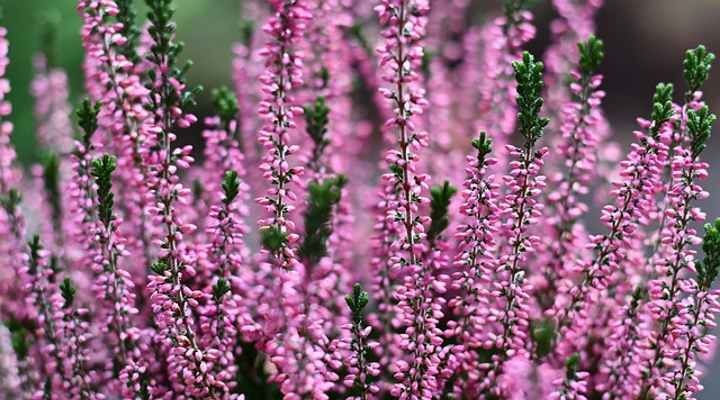
In the winter, when other plants perish due to the cold, Winter heath has a beautiful appearance with masses of little purple-pink flowers from November through April. Winter heath is a low-maintenance, tough plant that survives equally well in hot and freezing weather. It belongs to the heather family. When planted in full sun, the evergreen foliage provides freshness all summer.
Winter heath thrives in containers, rock gardens, as a winter border shrub, or as a foundation planting; it is also known as Heather ‘Darley Dale.’ Winter heath is a beneficial ground cover plant for full sun to add color to exposed soil throughout the winter because of its spreading nature. In USDA zones 6 through 8, winter heath thrives.
Japanese Andromeda (Pieris japonica)

Japanese Andromeda is an evergreen, late-blooming shrub that has winter flowers and is interesting all year. In the summer and autumn, the blooming shrub has lovely blossom buds. After that, in the conclusion of winter, huge dangling clusters of white or pink blooms appear. The shrub is in full bloom by March.
The Japanese Andromeda, which grows between 9 and 13 feet (2.7 to 4 meters) tall, is a huge broad-leafed shrub or small tree. Because of its glossy evergreen leaves, winter blooms, and colorful summer and fall bead-like buds, the spreading plant adds year-round appeal.
The Japanese Andromeda is known as the lily-of-the-valley bush because of its drooping clusters of pink or white flowers. Planting in USDA zones 4 through 8 is recommended for Japanese andromeda.
Witch Hazel (Hamamelis)

Cold tolerant witch hazel species produce cheerful winter blooms, and some of them bloom as early as the end of December. By mid-January, the majority of the cold-hardy witch hazel plants are in full bloom, with clusters of wiry golden yellow blooms on the woody stems. The Chinese and Japanese varieties of Hamamelis plants are ideal for growing winter-blooming witch hazels that can withstand frost.
Cold-hardy witch hazels with winter blooms include Hamamelis mollis, Hamamelis japonica, and Hamamelis vernalis. Between 10 and 15 feet (3 and 4. 5 meters) tall, witch hazel is a large deciduous shrub. Towards the end of the year and the beginning of the new year, the crinkly, ribbon-like blooms turn the bush yellow.
USDA zones 3 to 8 are ideal for witch hazel. Check from November to March to see if a winter-blooming cultivar is in bloom.
Clematis (Clematis cirrhosa)

In the winter, Clematis blooms. If you live in an area where the winters aren’t too chilly, Clematis cirrhosa may be a good option for you. Its blue, pink, and white flowers have showy bell, star, or saucer-shaped blooms throughout the winter. Clematis cirrhosa blooms prolifically in the warmer months from January onwards.
Clematis is an early bloomer that is perfect for covering arbors, trellises, arches, or fences with winter flowers because of its climbing nature. For severe winters, this Clematis species isn’t recommended. Clematis cirrhosa is a suitable winter plant for pots if you live in chilly climates and want to enjoy its winter blossoms. USDA zones 7 through 11 are ideal for Clematis cirrhosa.
Cyclamen

The best cyclamen variety to grow outdoors in cold winter is Persian cyclamen (shown in the photograph), which is the hardiest of the cyclamen varieties. Attractive blossoms with light, colorful petals that seem to point upward characterize Cyclamen plants. Pink hues, ranging from bright, vibrant pink to delicate pastel pink and white hues, are seen throughout the winter blooms.
Persian violet (Cyclamen coum) cultivars, which bloom outdoors in zone 4 through 8, are the coldest-hardy types of Cyclamen to bloom in winter. Most Cyclamen species, on the other hand, bloom in the winter and prefer chilly temperatures.
The plants are best grown in pots since most Cyclamen flowers don’t tolerate frost. Provided that the temperature doesn’t drop below 32°F (0°C), you may show your winter flowers outdoors in the winter. Bring them inside when the weather gets hot in the summer.
Only cold-hardy flowering plants that can be grown outdoors in the winter are Persian violet (Cyclamen coum) plants. As a result, it’s always a good idea to check the growing zones. The Persian cyclamen (Cyclamen persicum), for example, only blooms between the months of November and January in zones 9 through 11.
Snowdrops (Galanthus nivalis)
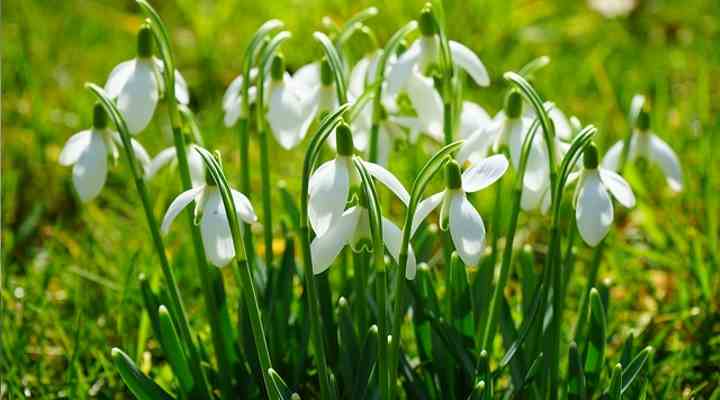
Snowdrop is a bulbous plant that produces delicate white blooms in late winter. It is cold hardy and blooms throughout the winter. In late winter and early spring, Snowdrop is one of the first bulbous plants to bloom. Short green stems, 8 inches to 10 inches (20 to 25 cm) tall, support tiny pendulous winter blooms. Every January through April, the clumping flowers reappear.
Snowdrop is a low-maintenance perennial plant that can withstand winter. The flowers don’t need to be deadheaded, and the leaves turn brown before regenerating at the end of the next winter. Along borders, beneath trees, and in pots, plant snowdrop blossoms. USDA zones 3 through 8 include snowdrops, which are cold-hardy.
Glory of the Snow (Chionodoxa)

During the winter, you may enjoy the little flowers of glory of the snow bulbs year after year. One of the earliest blooms you’ll notice is Chionodoxa, which bloom early in the spring. The delicate star-shaped lilac or purple blooms with a white center make the Glory of the Snow Flowers.
The perennial flowers return year after year, and the Chionodoxa tuberous roots endure harsh frosts. The small green leaves and blossoms thrive in full sun, ranging from 4 to 6 inches (10 to 15 cm) tall. USDA zones 3 through 8 are ideal for the glory of the snow plants (Chionodoxa).
Snow Crocus (Crocus chrysanthus)

In late winter or early spring, snow crocus bulbs bloom, producing chilly weather blooms. Late winter or early spring is when you can expect flowers to bloom. Crocus bulbs bloom sooner in the winter than other crocuses that have been in the ground for several years.
A low-growing blooming winter plant, the snow crocus Between 3″ and 4″ (7 – 10 cm) tall, small clumps of tulip-like flowers grow. Winter crocuses should be planted in full sun or partial shade. Crocuses thrive on rock gardens and lawns, and prefer borders. Snow crocuses are hardy annuals with blooms that bloom again each year. USDA zones 3 to 8 are ideal for growing snow crocus.
Algerian Iris (Iris unguicularis)
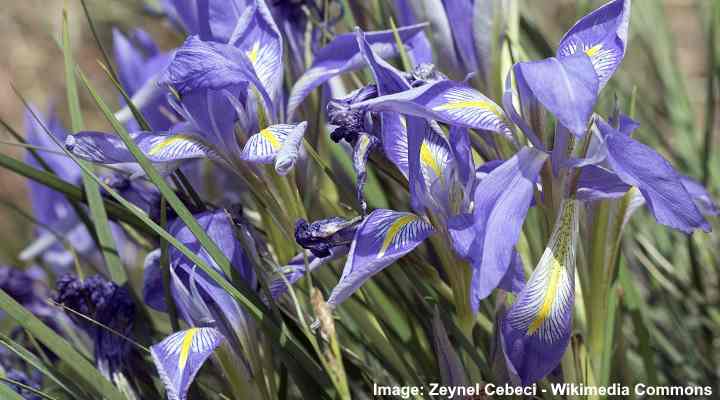
Algerian iris blooms throughout the winter, with a spectacular display of purple blossoms. The flowers ofevergreen winter iris plants are purple and violet, and they are fragrant. The showy winter blooms, which range in size from 2 to 3 inches (5 to 8 cm), are grown on 1 to 2-foot (30 to 60-cm) stems.
At temperatures as low as 5°F (-15°C), Algerian iris continues to grow. When other plants in the garden are dormant, the bulbous winter flowers bloom. Algerian iris thrives on well-drained soil and prefers full sun. This iris species is drought tolerant once it has been established. USDA zones 7 through 9 are ideal for Algerian iris.
